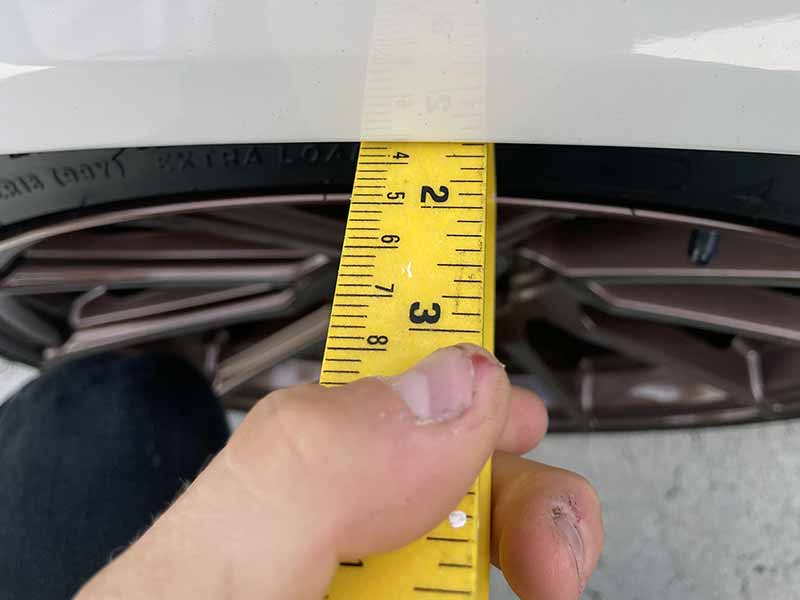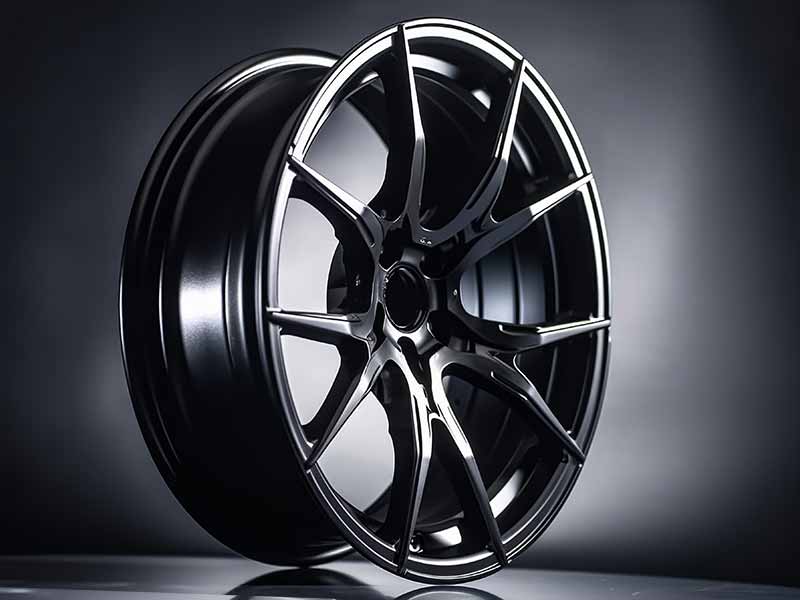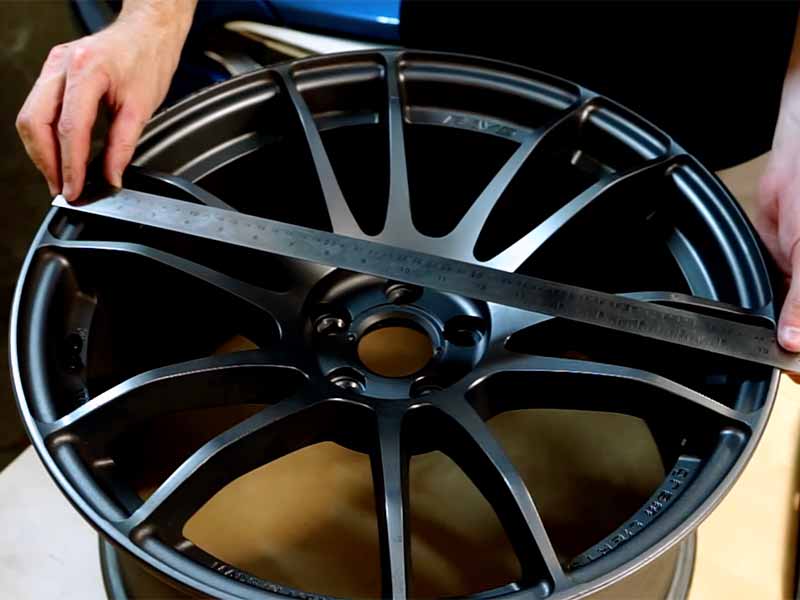Ever found yourself staring at your car or truck’s wheels, wondering what size they are? Whether you’re thinking about replacing your tires, buying new rims, or just curious, knowing your rim size is essential. But where do you start?
How To Measure Rim Size
To measure rim size with a tape measure, measure the diameter of the rim from one inner edge to the opposite inner edge, and the width from one inner flange to the other.
In this article, we’ll walk you through the process of measuring the rim size of your car or truck using a simple tape measure. We’ll cover everything from understanding rim size to recording and interpreting your measurements.

Understanding Rim Size
When we talk about the rim size of your car or truck, what exactly are we referring to? Simply put, the rim size is the diameter of the wheel from one edge to the other, measured through the center. It’s a critical measurement for ensuring that you choose the right tires for your vehicle.
Why Rim Size Matters
- Fit and Safety: The correct rim size ensures that the tire fits securely and performs as expected. Mismatched sizes can lead to unsafe driving conditions.
- Vehicle Performance: The size of the rim affects how your vehicle handles, accelerates, and brakes.
- Aesthetic Appeal: For those who care about the look of their vehicle, the rim size can impact the overall style and stance of the car or truck.
Rim Size vs. Tire Size
It’s easy to confuse rim size with tire size, but they are not the same:
- Rim Size: This is the diameter of the wheel itself, not including the tire.
- Tire Size: This refers to the diameter of the tire that fits on the rim, along with other measurements like tire width and aspect ratio.
Understanding the difference between these two is crucial when you’re looking to replace or upgrade your tires.
Measuring the Rim Size
Now, you might be thinking, “How do I find out what my rim size is?” Most of the time, this information can be found directly on the wheel or in your vehicle’s manual. However, if for some reason you can’t find this information, don’t worry! Measuring it yourself is a breeze, and I’m going to show you exactly how to do it with just a tape measure.
Preparing to Measure
Before we jump into the measuring part, let’s make sure we have everything we need and understand the best conditions for accurate measurement.
What You’ll Need
It doesn’t take much to measure your rim size accurately. Here’s what you’ll need:
- Tape Measure: A standard tape measure will do the trick.
- Paper and Pen: To jot down your measurements.
- Gloves (Optional): If you want to keep your hands clean.
Setting Up for Safety and Accuracy
- Park on a Flat Surface: To ensure safety and accuracy, make sure your vehicle is parked on a level surface.
- Secure the Vehicle: Engage the parking brake and, if needed, use wheel chocks for added safety.
- Let Things Cool Down: If you’ve recently driven your vehicle, give the engine and brakes some time to cool down to avoid any discomfort or burns.
Finding the Right Position
To get an accurate measurement, you need to measure the rim directly. Here’s how to position yourself:
- Access the Whole Rim: If necessary, turn the steering wheel so that the front wheels and rims are more accessible.
- Choose a Wheel: You can measure any wheel, as all should be the same size for a given vehicle.
- Clean the Rim Edge: Wipe down the edge of the rim for clear visibility and a precise starting point for measurement.

Measuring the Rim Diameter
Now that we’re all set up, let’s get down to the nitty-gritty of measuring your rim’s diameter. This is the main measurement that will determine which tires fit your vehicle.
Step-by-Step Guide
- Identify the Measuring Points:
- Find the innermost edge of the rim where it meets the tire.
- Remember, you’re measuring the rim only, not the tire.
- Extend Your Tape Measure:
- Stretch your tape measure across the center of the wheel, from one inner edge to the opposite inner edge.
- Ensure the tape measure is straight and not sagging in the middle.
- Read the Measurement:
- Look at the point where the tape reaches the opposite edge.
- Make sure to measure in inches or centimeters, depending on your preference.
- Record the Measurement:
- Write down the number. This is your rim’s diameter.
Tips for Ensuring Accuracy
- Measure Twice: It’s always a good idea to measure a couple of times to ensure accuracy.
- Check for Obstructions: Make sure nothing is obstructing the tape measure, like dirt or debris on the rim.
Rim Width Compatible Tire Size Calculator
Measuring Rim Width
While diameter is the key measurement, sometimes knowing your rim’s width is also important, especially for custom setups.
How to Measure Rim Width
- Locate the Width Measuring Points:
- You want to measure the distance between the inner edges of the rim flanges (the outermost edges where the tire sits).
- Apply the Tape Measure:
- Place the tape measure across the rim for the width measurement.
- Again, ensure it’s straight and taut.
- Record the Width Measurement:
- Note down the measurement, which will typically be in inches.
Remember, accurate measurements are key to ensuring your tires fit perfectly and your vehicle runs smoothly.

Recording and Interpreting Measurements
Now that you’ve got your measurements, let’s make sure you know what to do with them. Accurately recording and understanding these numbers is crucial for choosing the right tires.
Recording Your Measurements
- Write Them Down Clearly: As soon as you measure the diameter and width, write them down. It’s easy to forget or mix up numbers.
- Label Each Measurement: Clearly label which number is the diameter and which is the width. This avoids any confusion later.
Understanding Rim Size Notation
Rim sizes are typically noted in a specific way. Here’s how to interpret what you’ve measured:
- Diameter First: Rim sizes are usually noted with the diameter first. For example, if your rim’s diameter is 16 inches, that’s the first number you’ll use.
- Width Second (If Necessary): If the width is relevant for your needs, it’ll be the second number. For instance, if the width is 7 inches, your full rim size might be noted as 16×7.
Common Rim Size Units
- Inches: In the United States, rim sizes are usually measured in inches.
- Centimeters: In other parts of the world, you might find rim sizes in centimeters. To convert inches to centimeters, multiply by 2.54.
Double-Checking Your Measurements
- Compare with Manufacturer Specs: If possible, compare your measurements with the specifications provided by your vehicle’s manufacturer. This can be a good way to double-check accuracy.
- Consult a Professional: If you’re unsure or want confirmation, don’t hesitate to consult a professional. They can verify your measurements and advise on the right tires.
Resources
Below are some links you may find helpful when learning about tires:
Final Thoughts
The key to success is understanding the difference between rim diameter and width, ensuring you measure from the correct points, and double-checking your measurements for accuracy.
This knowledge not only aids in tire replacement and upgrades but also empowers you as a vehicle owner. Always consult a professional if you’re unsure about your measurements or if you’re dealing with custom or unusual rim sizes.
Good luck and happy motoring.




